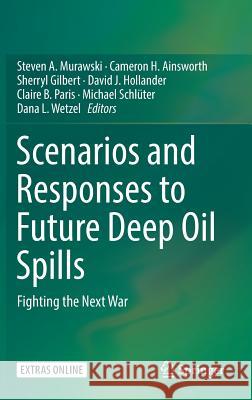Scenarios and Responses to Future Deep Oil Spills: Fighting the Next War » książka



Scenarios and Responses to Future Deep Oil Spills: Fighting the Next War
ISBN-13: 9783030129620 / Angielski / Twarda / 2019 / 554 str.
Scenarios and Responses to Future Deep Oil Spills: Fighting the Next War
ISBN-13: 9783030129620 / Angielski / Twarda / 2019 / 554 str.
(netto: 497,21 VAT: 5%)
Najniższa cena z 30 dni: 501,19
ok. 22 dni roboczych
Dostawa w 2026 r.
Darmowa dostawa!
Section 1. Ecosystem Modeling
Modeling the impacts of DWH and IXTOC‐I using Atlantis to understand cross‐trophic level
impacts. Understanding community change and effects of multiple simultaneous stressorsincluding fishing and longer‐term climate variability.
Section 2. Future Scenarios
In this section, a realistic suite of potential future deep spills, based on current and projected
regions of oil drilling, will be selected and analyzed. These scenarios will consist of
combinations of different locations (e.g., west, east and southern Gulf of Mexico), with differing
oil types and sub‐surface oceanography. A number of papers in this section will consider
differing physics and chemistry of the blowout, surface and sub‐surface distribution predictions
and degradation of oil, potentials for formation of oiled marine snow, and biological impacts.
Section 3. Evaluating Response Techniques for Future Spills
What scientific questions to responders need to have answered? How did various response
techniques (burning, booming, surface and sub‐surface dispersant application, sand berms,
freshwater flooding, direct surface and sub‐surface collection) work, and how can these
techniques be improved and optimized for systematic application? What would responders do
differently in future blowout scenarios? Can these studies add anything to the Net
Environmental Benefit Analysis performed by and necessary for the industry and response
communities?
Section 4. Summary
What we know now that we did not know then (e.g., DWH), what are the new paradigms, how
we might respond differently, unresolved and unanswered scientific questions, thoughts on
policy changes and appropriate regulatory requirements on the industry. “Lessons learned”
from previous deep spills and ensuing research.
.
It has often been said that generals prepare for the next war by re-fighting the last. The Deepwater Horizon (DWH) oil spill was unlike any previous – an underwater well blowout 1,500 meters deep. Much has been learned in the wake of DWH and these lessons should in turn be applied to both similar oil spill scenarios and those arising from “frontier” explorations by the marine oil industry. The next deep oil well blowout may be at 3,000 meters or even deeper. This volume summarizes regional (Gulf of Mexico) and global megatrends in marine oil exploration and production. Research in a number of key areas including the behavior of oil and gas under extreme pressure, impacts on biological resources of the deep sea, and the fate of oil and gas released in spills is synthesized. A number of deep oil spills are simulated with detailed computer models, and the likely effects of the spills and potential mitigation measures used to combat them are compared. Recommended changes in policies governing marine oil exploration and development are proposed, as well as additional research to close critical and emerging knowledge gaps. This volume synthesizes state-of-the-art research in deep oil spill behavior and response. It is thus relevant for government and industry oil spill responders, policy formulators and implementers, and academics and students desiring an in-depth and balanced overview of key issues and uncertainties surrounding the quest for deep oil and potential impacts on the environment.
1997-2025 DolnySlask.com Agencja Internetowa
KrainaKsiazek.PL - Księgarnia Internetowa









